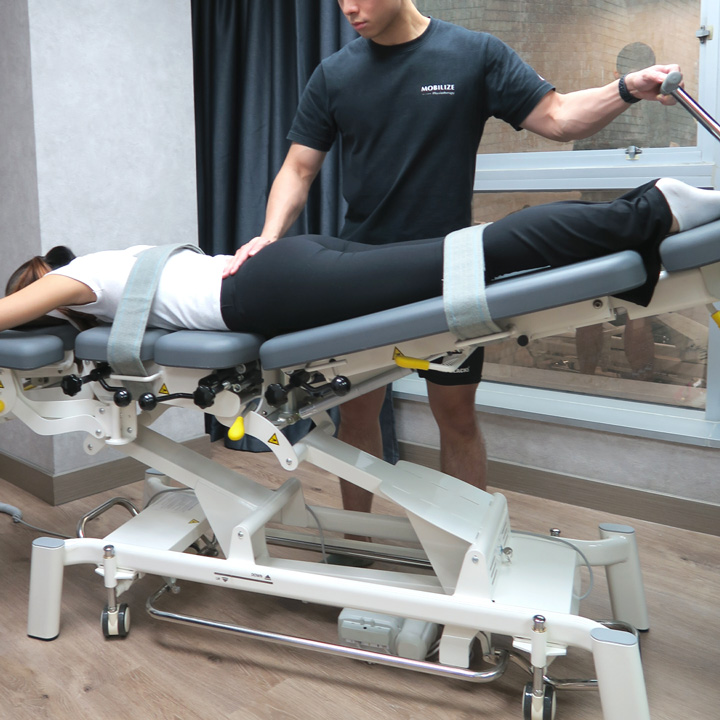Physiotherapy Treatment
Cervical and Lumbar Traction Therapy
What is Cervical and Lumbar Traction Therapy?
Cervical and lumbar traction therapy involves using external force through spinal mobilization and a therapeutic bed to gently stretch the patient's joints, increasing the space between the joints and alleviating nerve root compression. Lumbar traction is primarily used to improve sciatica, reduce pressure within the intervertebral discs, and assist with disc repositioning. Cervical traction is used to treat degenerative cervical arthritis, herniated discs, or to relieve muscle tension in the neck.
Principle of Cervical and Lumbar Traction Therapy
The treatment uses a therapeutic bed to mobilize the joints of the cervical spine and pelvis. Lumbar traction applies downward force on the pelvis, indirectly widening the intervertebral spaces and the openings for the nerve roots, which helps relieve nerve pain. When the cervical nerve foramina are too narrow, cervical traction can expand these openings, reducing pressure on the nerve roots. This can have a significant effect in improving symptoms of cervical syndrome, such as neck and arm numbness or pain.
Benefits of Cervical and Lumbar Traction Therapy
Traction not only targets the joints but also helps relax tight muscles, tendons, and ligaments. By increasing the intervertebral spacing, improving spinal curvature, and expanding the nerve foramina, it promotes better blood circulation to the soft tissues, resulting in muscle relaxation, reduced spasms, and pain relief.

